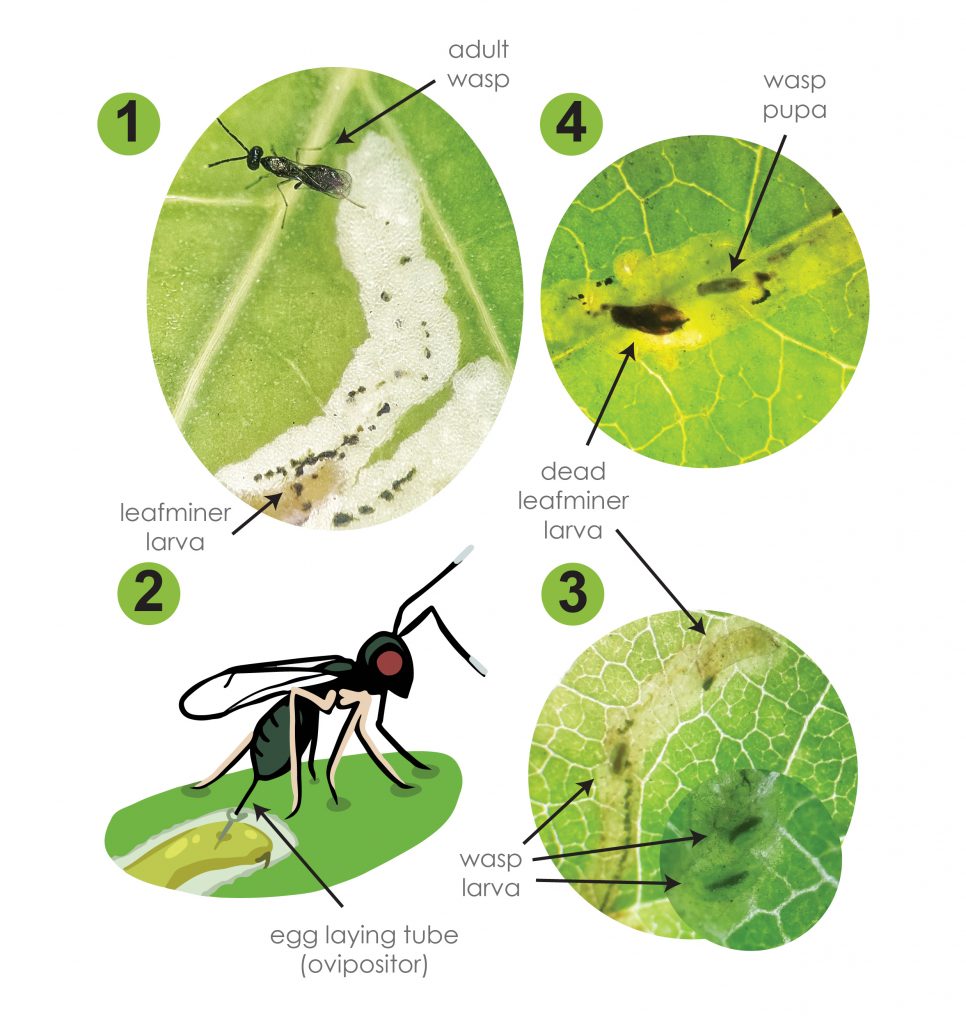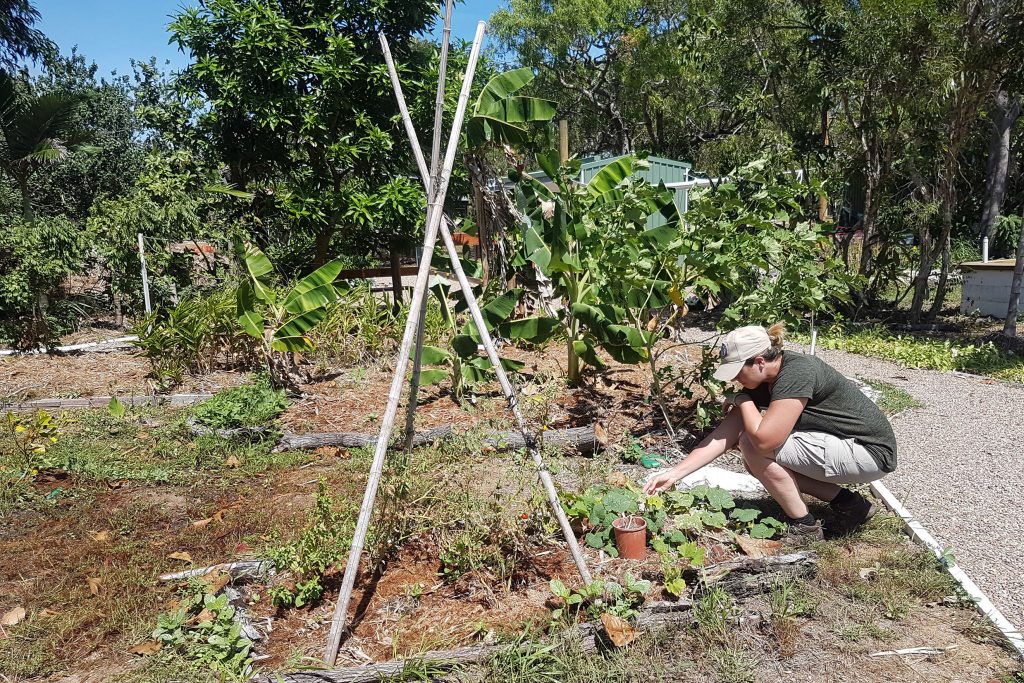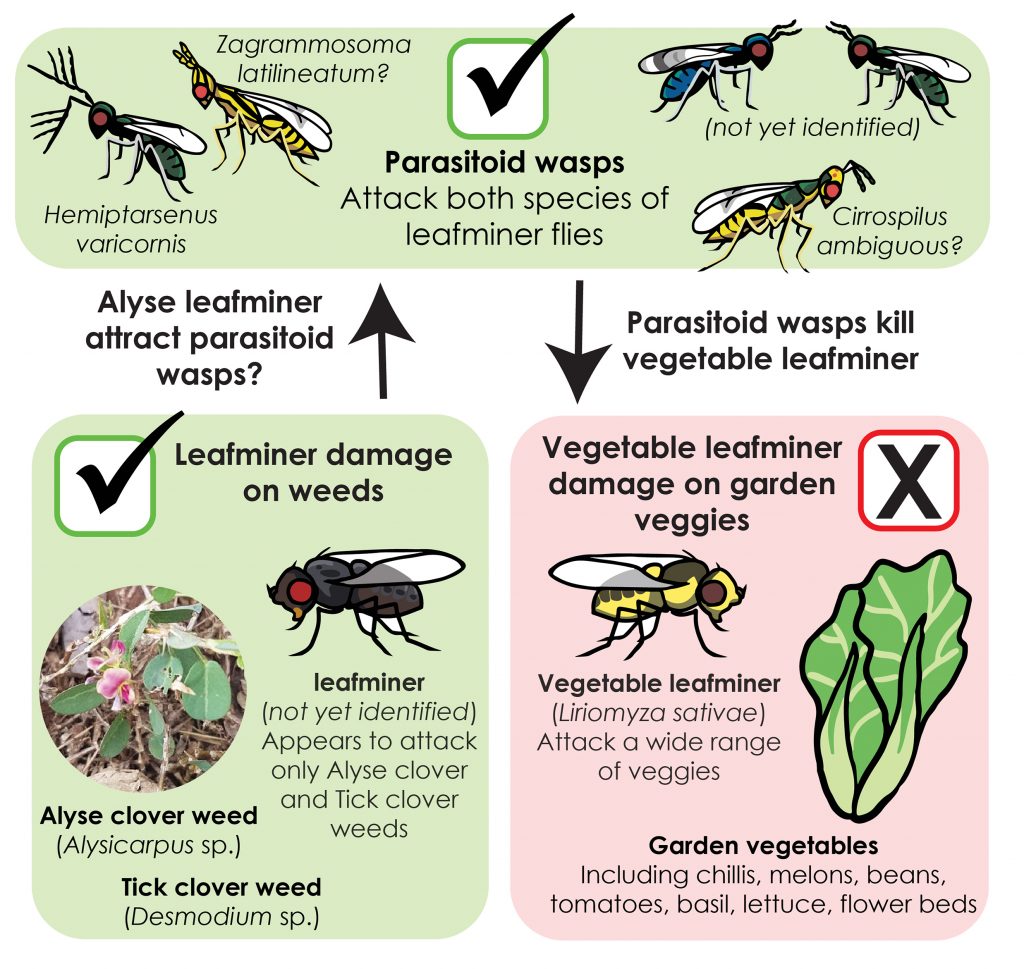A new and significant agricultural threat, vegetable leafminer (VLM, Liriomyza sativae), reached the Australian mainland in 2015 and has established in Seisia (one of the northernmost communities of the Cape York Peninsula).
cesar has recently completed its second field trip to far north Queensland and the Torres Strait as part of a Hort Innovation funded research project to prepare Australia for effective management of this insect.
VLM is a tiny ‘agromyzid’ fly with a taste for a wide variety of fruit and vegetable crops. It causes severe yield losses abroad, due largely to destructive feeding by the larvae, which create serpentine mines in the leaf. This mining not only looks unseemly, and could reduce marketability of commercial and community crops, it also hinders photosynthesis – the metabolic reaction that allows plants to convert carbon dioxide and water into sugars and oxygen.
In 2017, cesar researchers travelled to Thursday Island in the Torres Strait to become familiar with the pest and to meet key stakeholders from the community, federal and state agricultural departments, and local governments. Their second field trip in May 2018, focused on potential biocontrol options for VLM in Australia, as well as awareness raising with growers and community members in areas at risk of or already affected by VLM.
What is biocontrol?
Biocontrol involves the use of very tiny (almost microscopic) ‘parasitoid wasps’, some of which are ectoparasites (‘outer parasites’), and others, endoparasites (‘inner parasites’). In the case of VLM, much of the parasitism observed by cesar so far have been ectoparasites. These wasps use a needle-like ovipositor to inject eggs onto or inside the fly larvae. When the eggs hatches, the much smaller wasp larvae eat the leafminer larvae, using it as a food source to grow, and using the leafmine as protection against the outside world. Eventually, the wasp will pupate inside the mine, before emerging as an adult (As a particularly astute high school student on Thursday Island observed, “its babies eating babies!”).
In Australia, we already know of at least 70 species of parasitoid wasps that attack agromyzid flies, many of which are known to attack VLM overseas. This includes species that have been used overseas in successful integrated pest management (IPM) strategies for VLM. It therefore seems very likely that, in the case of VLM spreading further south, there will be no shortage of Australian parasitoids ready to exploit them. This is good news for agriculturalists and community gardeners alike.
However, there has been very little systematic sampling of agromyzid flies and their parasitoid wasp predators in Australia, making it difficult to predict which wasps might be most important, and how their ability to control VLM might vary across space and season. This is important information if we hope to integrate beneficial wasps into IPM strategies for VLM management in Australia.

Research in the field
Three major questions set the stage for the field surveillance and collection activities during this recent field trip:
- Has VLM spread any further south than Seisia?
- Which species of wasps are already attacking VLM in Seisia and the Torres Strait?
- Which species of wasps are already present and attacking agromyzids throughout the rest of the Cape, particularly in areas at high risk of VLM establishment such as Weipa and Lakeland?
cesar and AUSVEG researchers left Cairns in May to undertake a 2200 km road trip through the northernmost growing regions in QLD at Lakeland, past the Coen inspection centre which marks the entry to the Far North QLD biosecurity zones, into the communities of the Northern Peninsula Area (NPA), and finally reaching the Thursday Island (TI) group in the southern Torres Strait. The trip provided the opportunity to talk to growers, gardeners, and community representatives to raise awareness about VLM and biosecurity as a whole. Crops, gardens, and weeds were also surveyed for signs of VLM or other leafminers. Several community members were surprised to hear that they had a backyard colony of VLM and on reflection, thought the flies could have contributed to unhealthy harvests in recent years. Any leafmines discovered were collected to rear the flies and wasps.
The surveillance and collection work yielded some very exciting results, including:
Confirmation that VLM has not spread further south than the NPA communities:
Known host plants for VLM were surveyed along the Cape, including farms in Lakeland, private gardens in Coen and Weipa, and gardens and campgrounds at each roadhouse along the Peninsula Development road. No evidence of VLM activity was detected outside of Seisia, were VLM was already known to exist.
Confirmation of at least 5 species of wasps as parasitoids of VLM in the Torres Strait and Northern Peninsula Area:
By collecting VLM larvae inside leafmines and isolating each leaf sample, the parasitoid wasps were collected as they emerged from leafmines. This shows which wasp species are attacking the Australian strain of VLM. Moreover, sampling suggested a very high parasitism rate of VLM in Seisa; upwards of 80% of the VLM larvae collected had already been attacked and/or killed by a parasitoid wasp.

Identification of at least 7 species of parasitoid wasps attacking up to 5 species of agromyzid leaf-mining flies along the Cape York Peninsula and in the Torres Strait:
While formal identifications of samples have not yet been made, a preliminary sorting suggests that up to 4 additional species of agromyzid flies collected from a variety of host plants (including eggplants in Lakeland, Alysicarpus and Desmodium weeds along the entire Cape, and various native trees and shrubs) are readily parasitized by wasps. From these agromyzids, at least 7 different species of parasitoid wasps were reared (further results await confirmation from wasp taxonomy experts).
Identification of a potentially valuable reservoir community for VLM parasitoids:
One community of flies and wasps stretched all the way from Cairns to Thursday Island, and has become of particular interest. Two genera of weeds in the bean family, Alysicarpus and Desmodium, were observed at nearly every stop made along the survey trip (including Lakeland, Weipa, Seisia, Horn Island and Thursday Island). Wherever these weeds were found, they were observed being attacked by a mystery leafminer which appeared to attack only these weeds. This species of leafminer was being attacked by up to 10 different wasp species. It is therefore possible that the Alysicarpus and Desmodium weeds may play an important role as a ‘reservoir’ of parasitoid wasp food (the mystery fly), which may encourage beneficial wasps to hang around and do their good work on VLM.

cesar researchers will return to the Torres Strait and Northern Peninsula Area next month for a follow up field trip which will focus on testing field surveillance and diagnostic techniques for VLM, as well as additional wasp collections. We will return at least two more times next year, before the project concludes.
Stay tuned for updates as this investigation unfolds.
Acknowledgements
This project is supported by funding from the vegetable R&D levy and the Nursery and Garden levy through the grower owned Research & Development Corporation, Hort Innovation. Project partners are: cesar, AUSVEG, Plant Health Australia, and the Northern Australia Quarantine Authority. Special thanks go to Nursery & Garden Industry Australia and the Queensland Department of Agriculture for their support.
Cover image: Photo by Elia Pirtle, Cesar Australia
